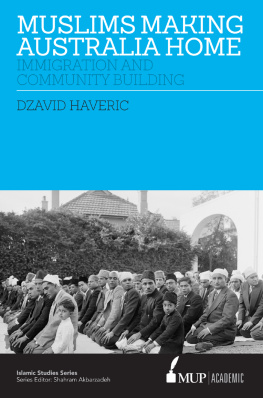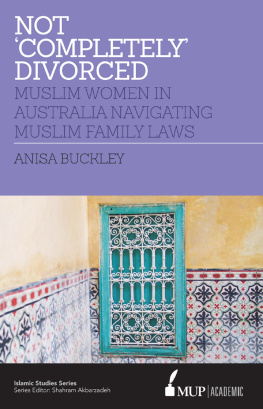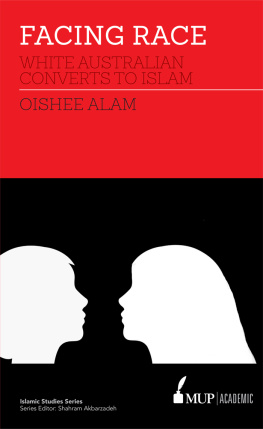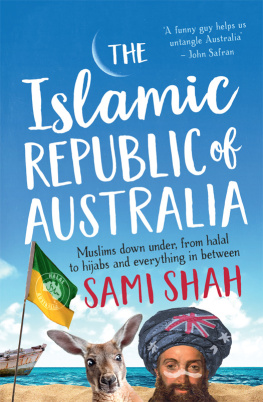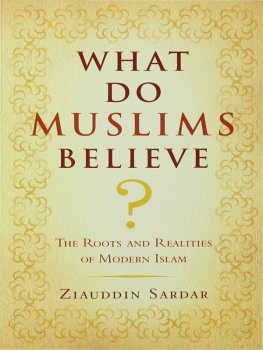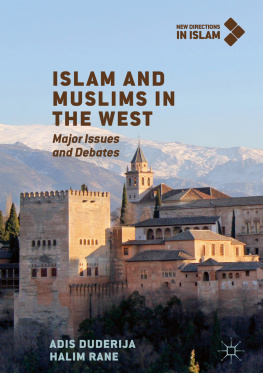Muslims Making Australia Home
Muslims Making Australia Home
Immigration and Community Building
Dzavid Haveric

MELBOURNE UNIVERSITY PRESS
An imprint of Melbourne University Publishing Limited
Level 1, 715 Swanston Street, Carlton, Victoria 3053, Australia
www.mup.com.au
First published 2019
Text Dzavid Haveric, 2019
Design and typography Melbourne University Publishing Limited, 2019
This book is copyright. Apart from any use permitted under the Copyright Act 1968 and subsequent amendments, no part may be reproduced, stored in a retrieval system or transmitted by any means or process whatsoever without the prior written permission of the publishers.
Every attempt has been made to locate the copyright holders for material quoted in this book. Any person or organisation that may have been overlooked or misattributed may contact the publisher.
Text design by Phil Campbell
Cover design by Phil Campbell
Cover image: Muslims from Indonesia, Malaya, Pakistan, Turkey, Albania, Bosnia and Lebanon turn faces towards Mecca during the prayers in the courtyard of the official residence of the High Commissioner for Pakistan, 1956. Courtesy of The National Archives of Australia.
Typeset by J&M Typesetting
Printed in Australia by OPUS Group

9780522875812 (paperback)
9780522875829 (ebook)
9780522875805 (hardback)
Contents
Acknowledgements
This work is but one part of my broader research on the history of Islam and Muslims in Australia through which I received support from various scholars and institutions. I am grateful to Dr Bruce C Wearne for the pre-editing of the manuscript and his valuable support, Barbara Peek for assistance in preparing the manuscript for publication and her continuous support, and to Vicki Snowdon for the final editing of the manuscript. I would like also to thank the following persons for the academic support they have kindly given me: Dr Moya McFadzean, Dr Abdul Khaliq Kazi AM, Professor Mehmet Ozalp, Professor Salih Yucel, Dr Hass Dellal OAM, Janeth Deen OAM, Dr Ahmed Hassan, Sherene Hassan OAM, Nail Aykan and Mr Zia Ahmad.
I would like to acknowledge the financial support received for my research from the Centre for Public and Contextual Theology at Charles Sturt University. I am also thankful for the financial support received from the Multicultural Foundation of Australia.
I would like to thank the following institutions for permitting me to reproduce the images from their collections: The National Archives of Australia, the State Library of Queensland, the Northern Territory Library, as well as the use of archival sources from the National Library of Australia including Trove and the Anglican Archive in Melbourne. I would also like to acknowledge the following images kindly provided for this publication: 2.1 courtesy Ahmed Skaka, former imam of Adelaide mosque; 2.2 and 5.1 courtesy Dr Ahmed Hassan; 2.3 courtesy Janeth Deen; 3.1 and 4.2 courtesy Dr Abdul Khaliq Kazi and 4.1 courtesy Ahmad Imam, son of Imam Fehmi.
My thanks also go to various community organisations and groups from many different ethnic backgrounds across Australia for providing me with access to their valuable data, including the Queensland Muslim Historical Society, the Islamic Society of Darwin as well as support received from the MeshihatBosnian Islamic community.
Last but not least, I wish to express my wholehearted gratitude to my family for their support and encouragement.
Dr Dzavid Haveric
Foreword
The story of Islam and the Muslim people is an integral part of Australian history. This book covers the period between post-World War II until the 1980s when the history of Islam in Australia unfolded into a rich multi-ethnicity, manifested by diverse Muslim ethnic groups. This book documents socio-historical characteristics rather than providing a theological interpretation. It covers interrelated Islamic themes in the sociology of religion by noting how these themes reappear in cultural history. By doing so, it reveals many unknown or little known historical facts and stories, including valuable memories.
This breathtaking cultural history of Muslims in Australia, gleaned, for the first time, from documents of Muslim organisations, gives us a recorded chronology of events showing the diversity of Muslim people, their struggles in maintaining their faith, the unique and essential part of their faith and culture, and most importantly the building of their ethnic or multiethnic communities across Australia. The book addresses the development of local and dispersed Muslim communities after World War II into an organised and multicultural part of Australian society. It shows chronologically how Islam in Australia was established, interpreted and fashioned by immigration and the nations Muslim communities in each state and territory.
Islam in Australia is presented as a global religion, but in a local setting. Islam, for many, is a central part of their identity. Muslims in Australia may belong to many different ethnic groups, cultures or even denominations/sects. The book documents the universal message of Islam for Australian Muslims albeit adapted to local environment and needs, thus demonstrating the Muslims attachment to Australia and their Australianness.
The book explores the building of Muslim communities and the history of these communities through the memories of Australian Muslims. The cosmopolitan make-up of the membership of multiethnic Muslim communities became one of the most distinctive characteristics of these newly formed religious communities in Australia. Its flourishing community settings were made possible by the freedom of religion in Australia. It documents the emergence of the national multiethnic Muslim representative body, the AFIS (then AFIC), and its gigantic task in coordinating Muslim communities across Australia, building social capital and education, liaising with governments and developing international relations among other activities. This includes the role and contributions of Muslim women as one of the most welcome developments in the history of Islam in Australia as well as the engagement of younger generations of Muslims in the life and future direction of the community.
This history is interlinked with other faiths by sharing universal values within Australias religiously pluralistic mosaic. An important part of the research is interfaith relations within Australias religiously pluralistic mosaic. We must remember that Islam is one of three faiths that have a common ancestor in Prophet Abraham (Ibrahim in Arabic) giving them the title of the three Abrahamic faiths. Moreover, Islamic ideals and values are essentially amalgamated in the very spirit of humanistic ideals and values of Australia. Over time, Australian Muslim representatives, by cherishing an ecumenical vision, shared universal religious values with other faiths by taking part in cross-cultural interactions and interfaith dialogue. It enhances mutual tolerance, understandings and support. As such, it is one of the most profound developments in Australias post-war history.
Dr Abdul Khaliq Kazi
CHAPTER 1
Post-World War II to the 1980s
Muslim Immigration
Immigration in the last decades of the White Australia Policy
Australia has a long history of immigration. It is one of the few traditional settler immigration countries in the Western world. It was the apparent need for population growth and economic development in the post-war period that led to the broadening of Australias immigration policy. As a consequence, successive waves of migration led to the settlement of Muslim communities of diverse ethnic backgrounds across Australia. Over time, Muslims would arrive in Australia from 183 countries, making them one of the most ethnically and nationally heterogeneous communities.
Next page
